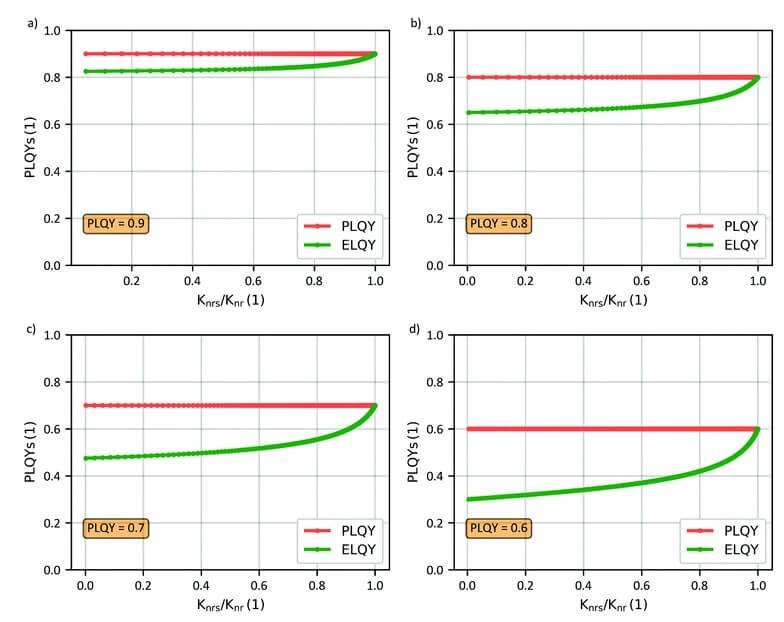
Publications
Here you will find research Research papers enabled by Fluxim’s development tools

Evidence for localized trap formation during TADF OLED degradation
Edoardo Stanzani, Stefano Sem, Simon Züfle, Beat Ruhstaller, Sandra Jenatsch,
Organic Electronics, Volume 139, 2025, 107204, ISSN 1566-1199

Determining non-radiative decay rates in TADF compounds using coupled transient and steady state optical data
Stefano Sem, Sandra Jenatsch, Kleitos Stavrou, Andrew Danos,
Andrew P. Monkman and Beat Ruhstaller
J. Mater. Chem. C, 2022, Advance Article

Efficient selenium-integrated TADF OLEDs with reduced roll-off
Hu, Y.X., Miao, J., Hua, T. et al.
Nat. Photon. 16, 803–810 (2022).

High-efficiency thermally activated delayed fluorescence materials via a shamrock-shaped design strategy to enable OLEDs with external quantum efficiency over 38%
Li, G., Pu, J., Yang, Z., Deng, H., Liu, Y., Mao, Z., Zhao, J., Su, S., Chi, Z., Aggregate 2023, 00, e382.

Enhancing Blue Tadf Narrow-Band Emission Through Tandem Oleds with Optical Modeling Simulation
Xu, Ting and Jiang, Haixiao and Dong, Haojie and Zhao, Kele and Liang, Xiao and Sun, Yanqiu and Ding, Lei and meng, lingqiang and Meng, Hong,
![Donor or Acceptor: Molecular Engineering Based on dibenzo[a,c]phenazine Backbone for Highly Efficient Thermally-Activated Delayed Fluorescence Organic Light-Emitting Diodes](https://images.squarespace-cdn.com/content/v1/6679cd2df099450d2239eee2/1734618013434-VYLZELUIMNXKU1JBHRJW/Donor%2Bor%2BAcceptor.jpg)
Donor or Acceptor: Molecular Engineering Based on dibenzo[a,c]phenazine Backbone for Highly Efficient Thermally-Activated Delayed Fluorescence Organic Light-Emitting Diodes
Liu, Y., Yang, J., Mao, Z., Ma, D., Wang, Y., Zhao, J., Su, S.-J., Chi, Z.,
Adv. Optical Mater. 2023, 2201695

Printed Copper Grid Transparent Conducting Electrodes for Organic Light-Emitting Diodes
Takeshi Kamijo, Suzanne de Winter, Pradeep Panditha, and Eric Meulenkamp
ACS Applied Electronic Materials 2022 4 (2), 698-706

TADF OLEDs and Hyperfluorescent OLED Simulation with Setfos
Fluorescence‐based organic light‐emitting diodes (OLEDs) using thermally activated delayed fluorescence (TADF) have increasingly attracted attention in research and industry. Even though the experimental realization of this concept has demonstrated promising external quantum efficiencies, the full potential of this approach has not yet been assessed. To this end, a comprehensive electro‐optical device model accounting for the full exciton dynamics, including triplet harvesting and exciton quenching is presented.
